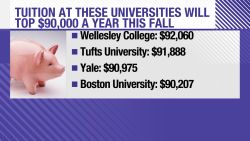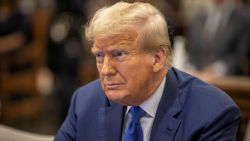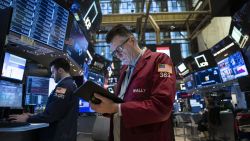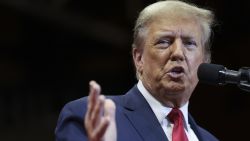Oil prices dropped sharply Tuesday, following Monday’s surge that sent shock waves around the world.
US oil futures settled down 5.7% at $59.24 a barrel. It was the worst one-day drop for US oil since August 1, according to Refinitiv. Oil prices initially fell after Reuters reported Saudi Arabian oil production would return to normal within two to three weeks. Tuesday afternoon, Saudi Energy Minister Abdulaziz bin Salman said the country’s oil exports would not fall in September, as the kingdom will rely on reserves to keep exports stable.
Investors took that as a positive sign about the impact of the weekend’s attacks on global oil supply.
Brent crude, the international benchmark, settled down 6.5% at $64.55. On Monday, oil prices shot up more than 14%.
US stocks finished slightly higher, eking out gains just before the market closed. The Dow (INDU) finished 0.1% or 32 points higher, while the S&P 500 (SPX) closed up 0.3%. The Nasdaq Composite (COMP) closed up 0.4%.
Elsewhere in the world, stocks closed mostly in the red.
Stock investors’ focus is turning from oil to the Federal Reserve, which is beginning a two-day monetary policy meeting that will culminate in its interest rate update on Wednesday.
Expectations for a quarter-percentage-point rate cut have dropped to less than 50%, according to the CME’s FedWatch tool. That’s down from 92% last week, when the majority still expected rates to be slashed.
A half percentage point cut is no longer priced in at all.
“There have been a variety of explanations for the change in expectations, be it stronger data last week, improved risk appetite, trade war optimism and even higher inflation potential following the oil price spike,” said Craig Erlam, senior market analyst at Oanda.
“Whatever the reason, it would be an interesting move from the Fed to hold at the meeting and one that would almost certainly draw the ire of President Trump, although they must be used to that by now,” Eriam added.
Investors were also concerned about a sudden spike in the overnight lending rate. The repo rate, which is the borrowing rate banks charge each other for short-term loans, jumped overnight, indicating low market liquidity. The New York Fed injected $53 billion to help matters. The market for US Treasuries is one of the most liquid markets in the world, so the repo rate spike was surprising.
Better-than-expected economic data has added to investors’ concerns that the Fed may hold off on cutting rates. Industrial production was stronger than expected in August, even though the US manufacturing sector shrank for the first time in August.
Meanwhile, the National Association of Home Builders housing index for September climbed more than expected. Mortgage rates have been dropping to multi-year lows this summer in the United States, as longer-dated Treasury yields keep falling. This in turn has sparked some life in the housing sector.
























